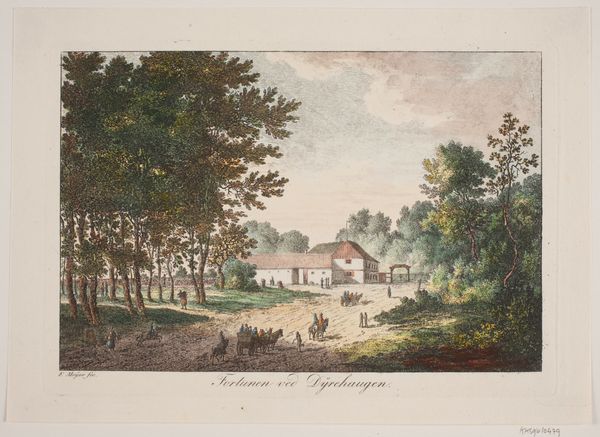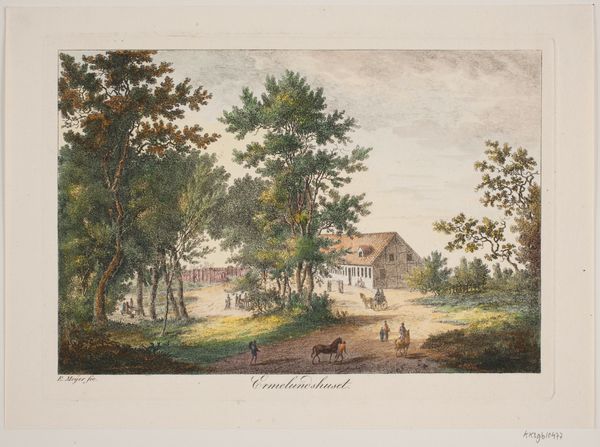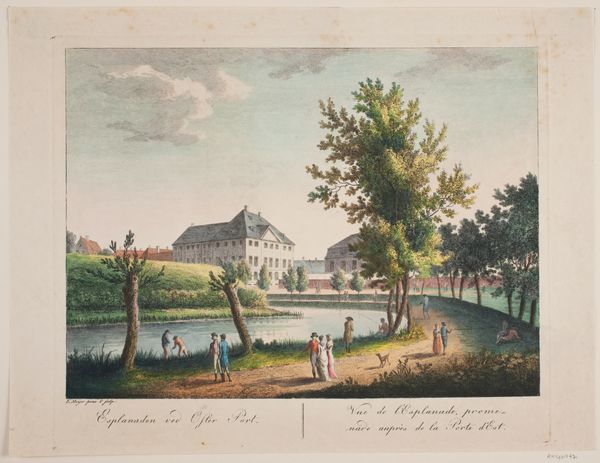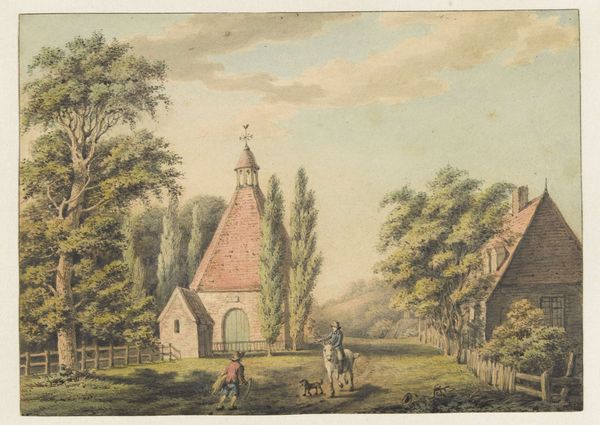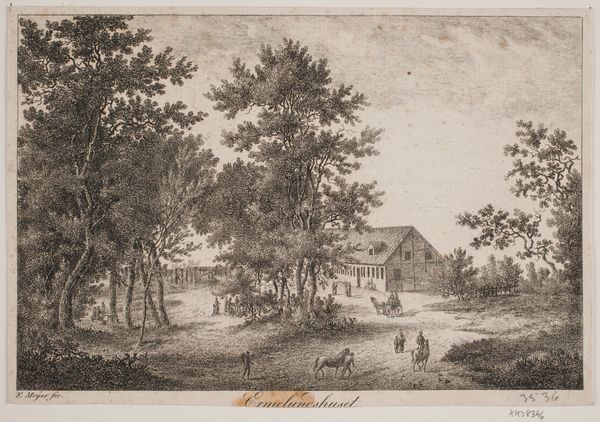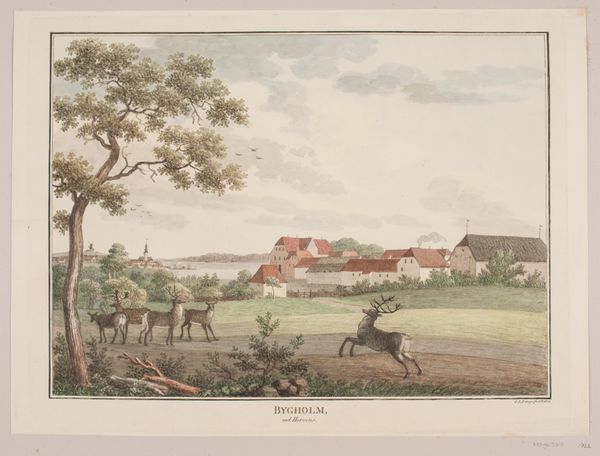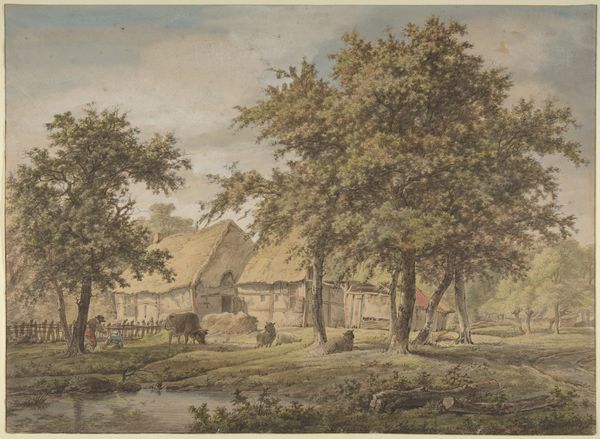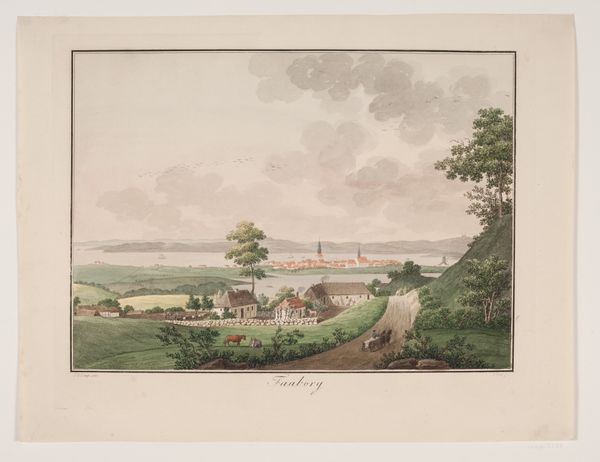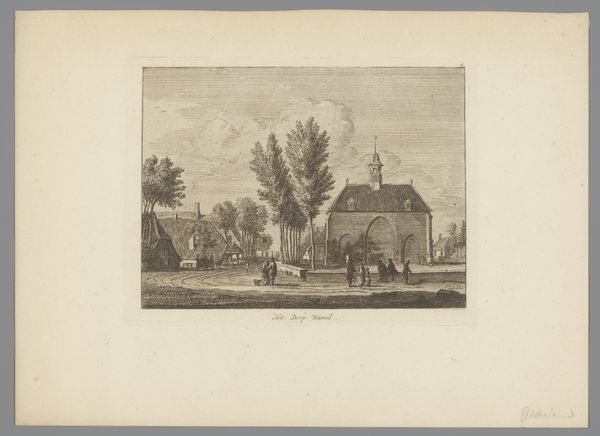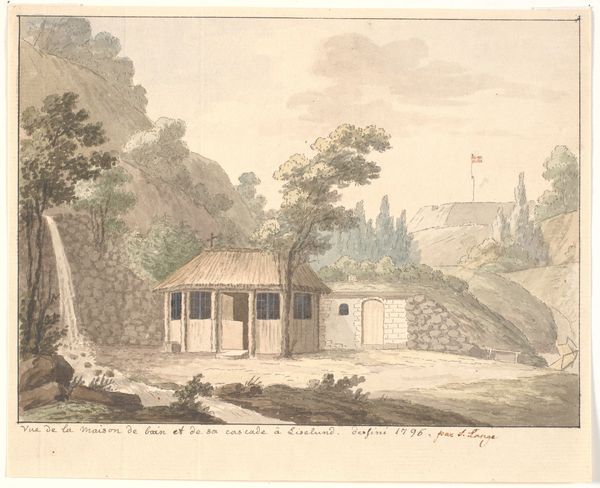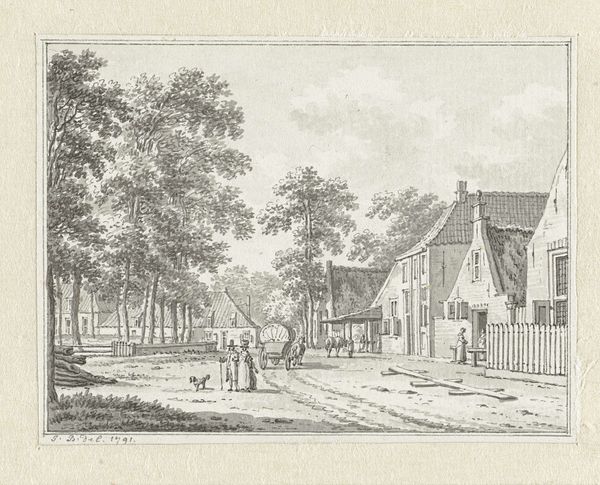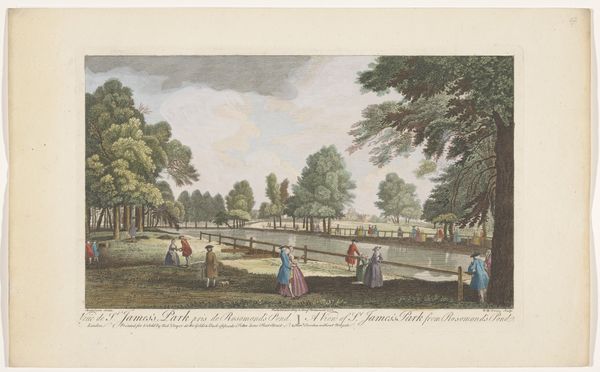
print, watercolor, engraving
# print
#
landscape
#
watercolor
#
romanticism
#
cityscape
#
genre-painting
#
engraving
#
watercolor
Dimensions: 143 mm (height) x 206 mm (width) (plademaal)
Curator: Elias Meyer's 1804 work, “Hellerup ved Strandvejen,” part of the Statens Museum for Kunst collection, presents us with a compelling scene. It employs printmaking techniques including watercolor and engraving, and offers a detailed view of everyday life cast in a Romantic light. Editor: My immediate response is to its pastoral tranquility, the stillness conveyed. It’s as though time slows as we look at it. I am drawn to the earthy, raw qualities of the print that render so vividly the road and the humble thatched house. Curator: Precisely, and Meyer, being of the Romantic period, leverages the everyday to communicate larger societal truths. The Strandvejen itself, even then, would have represented a path of transit, of potential encounter—a symbol of the nascent urban/rural transition. Notice how carefully he positions figures—each group with its own story, symbolizing the diverse human experiences converging on this single road. Editor: I find the depiction of the houses particularly significant. Considering the social context of early 19th-century Denmark, this structure represents the labor and materials accessible to ordinary people. That thatched roof would be the result of countless hours of manual work, the sourcing and preparation of local thatching material which itself becomes a testament to craftsmanship. Curator: Yes, it also resonates with broader architectural symbolism, suggesting shelter, community, domesticity and stability amid constant change, an assertion that the ordinary, the local and traditional persists in an age of rising urbanization and change. What do you think about that centralized building on the horizon, partially obscured, almost haunting? Editor: Interesting you point it out! Given your comment on transition and my inclination to center this type of social process, the off-center positioning of that central, perhaps stately building gives me a feeling it is about to vanish or that it may be some long past legacy of another regime that might soon be overthrown by revolutionary actions. Curator: Perhaps a metaphor then, on the decline of established social hierarchies. Looking again, what do you think about the watercolor? Does it soften the social criticism? Editor: Absolutely. It diffuses potential political outrage into gentle nostalgia, transforming labor from toil into something of beauty. I love how, in that, watercolor on the print challenges a stark high-low distinction, subtly elevating the status and sentiment of the materials at hand. Curator: It is fascinating how seemingly straightforward imagery encodes such complex narratives when you pull apart the different symbols and mediums involved in the artwork's creation. Editor: Agreed; by focusing on the materiality and production techniques, the cultural values embedded within, that become so visible!
Comments
No comments
Be the first to comment and join the conversation on the ultimate creative platform.
